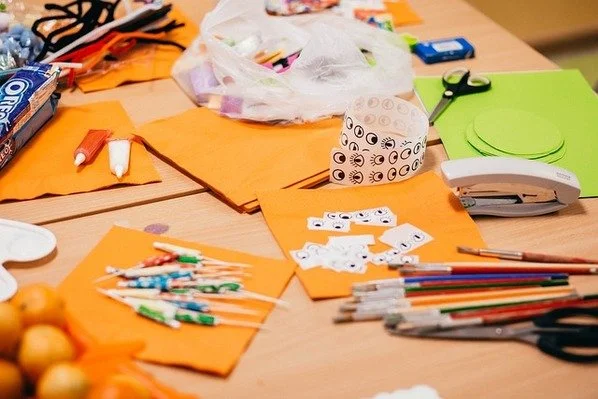Sensorial Materials That Refine a Child’s Perception
In early childhood, learning happens through the senses. From the moment children are born, they touch, see, hear, taste, and smell their way through the world, building connections and forming an understanding of their environment. In Montessori classrooms, sensory materials are designed to sharpen these natural abilities, helping children refine their perception and organize the information they receive through their senses.
Designed for Focused Exploration
Each sensorial material in a Montessori classroom isolates one specific quality—such as size, color, texture, sound, weight, or temperature. By removing distractions, these materials help children focus deeply on one aspect of perception. For example, the Pink Tower, a set of ten graduated cubes, isolates the concept of size. As children in Montessori toddler programs build and compare the cubes, they begin to notice differences in dimension, developing visual discrimination and coordination.
Building Visual and Spatial Awareness
Materials like the Brown Stair, Red Rods, and Knobbed Cylinders help children fine-tune their visual perception. As they handle and compare these materials, they learn to observe differences in height, width, length, and diameter. These activities prepare the mind for later concepts in geometry, measurement, and math. Children also build spatial reasoning as they arrange the pieces, learning how size and order relate to one another.
Refining the Sense of Touch
Montessori sensorial materials offer rich opportunities to explore texture and temperature. Touch boards and fabric swatches help children distinguish between rough and smooth, soft and coarse, warm and cool. The Baric Tablets allow them to feel the difference in weight between similar-looking objects, developing a more precise sense of touch. These activities not only refine tactile perception but also support focus, concentration, and language development as children learn to describe what they feel.
Discerning Sounds, Smells, and Tastes
Auditory perception is developed through materials like the Sound Cylinders—pairs of containers filled with different substances that make distinct sounds when shaken. Children match the pairs by listening carefully, learning to differentiate between volume and tone. Smelling Bottles and Tasting Exercises encourage children to identify and compare scents and flavors, building awareness and appreciation of sensory input that might otherwise be overlooked.
Language and Sensory Integration
Sensorial materials don’t just develop perception—they also expand vocabulary. As children work with the materials, teachers introduce descriptive words like “thick,” “narrow,” “loud,” “fragrant,” or “bitter.” These words help children label and categorize their experiences, building both language skills and cognitive structure. The ability to observe closely and articulate differences supports future learning in science, art, and language.
Montessori sensorial materials offer a structured and engaging way for children to explore the world through their senses. By isolating specific qualities and encouraging deep, hands-on engagement, these tools help young learners develop sharper observation, clearer thinking, and a richer understanding of their environment.
